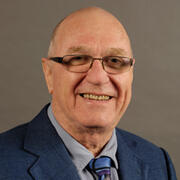
Eli Peli, MSc, OD, Professor of Ophthalmology, was the invited keynote speaker at two conferences in China in October and November. On October 26, he gave the keynote talk, “Treatments for neurological visual field loss,” at the first Shenzhen International Summit Forum on Ophthalmology and Visual Science in Shenzhen. On November 9, he presented “Prismatic treatments for visual field expansion” at the 15th Optometric Conference in Hong Kong. This year’s topic was neuro vision rehabilitation.

Eli Peli presenting at the 15th Hong Kong Optometric Conference.
Between these two conferences, he spent time visiting former fellows from his laboratory, as well as his current PhD student’s academic department in Shanghai Jiao Tong University. He also gave workshops and saw patients in Shenzhen, Shanghai, and Hong Kong. He gave talks throughout his trip, including at the Eye & ENT Hospital at Fudan University in Shanghai, the Chongqing key Laboratory of Bio-perception & Intelligent Information at Chongqing University in Chongqing, the Hong Kong Polytechnic University School of Optometry, and the Shenzhen Eye Hospital. He also spoke at Sibionics, a company that is developing a retinal electronic vision implant that is preparing to start clinical trials next year.
Dr. Peli is a Professor of Ophthalmology and co-director of the Mobility Enhancement and Vision Rehabilitation Center of Excellence at Harvard Medical School. His research spans the interface between engineering and ophthalmic/vision research. Specifically, he tries to understand how we see in the context of low vision rehabilitation. The application of his basic research findings fuels the development and evaluation of novel vision aids and methods for low vision rehabilitation. For instance, he developed a metric for contrast in complex images that permits quantitative specification of contrast in images, which has been widely adopted. His research also includes eye movement analysis, binocular vision, image processing, image communications, and optics. His most recent work in low vision focuses on mobility and devices for mobility, including pedestrian mobility and driving.
